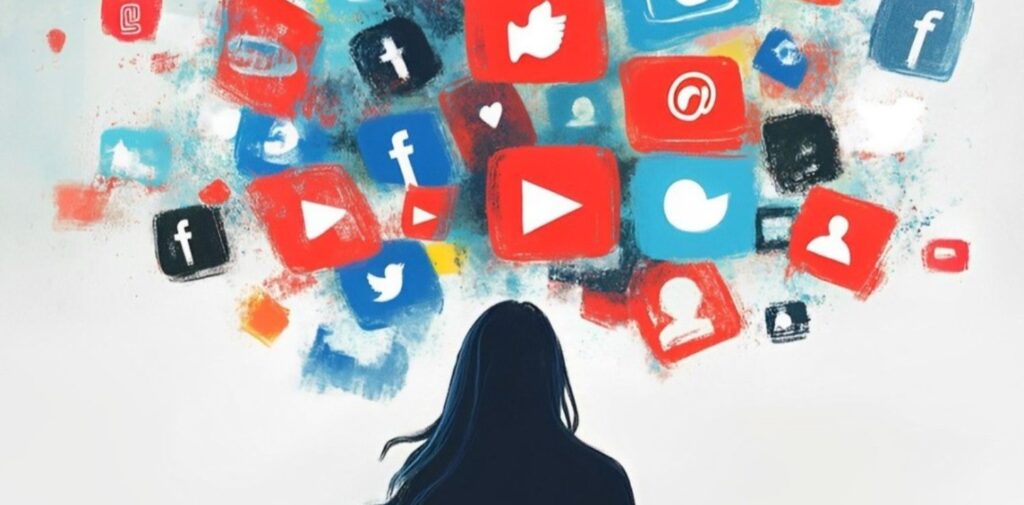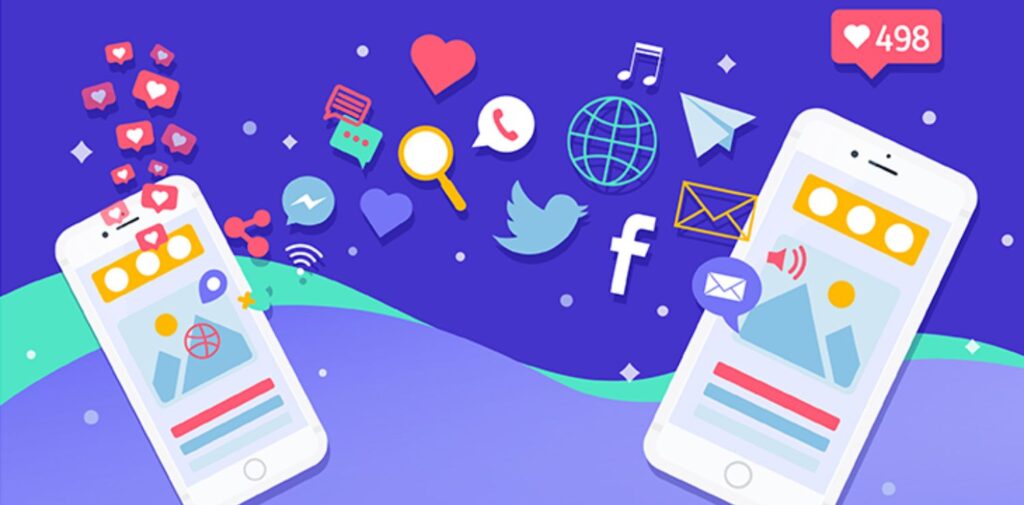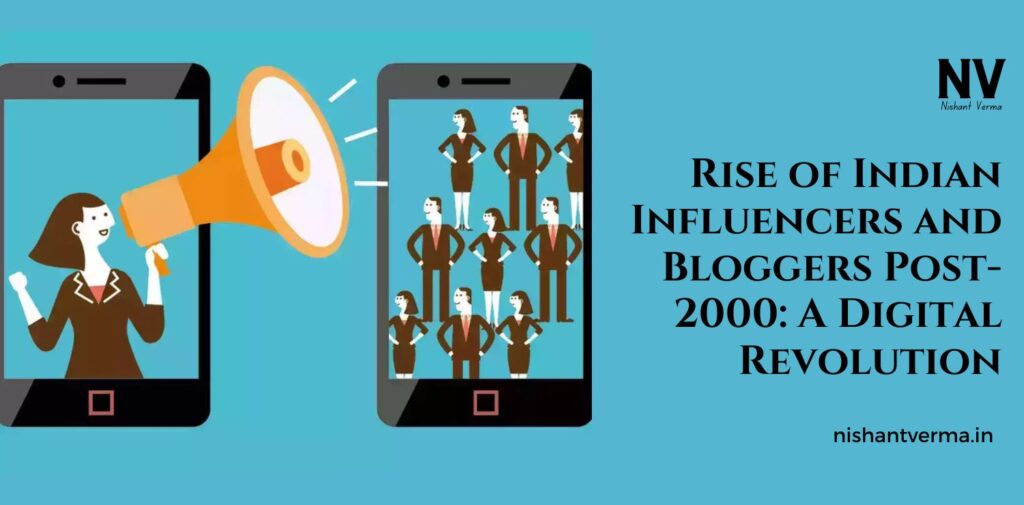In the early 2000s, India was still in the process of catching up with the digital age. The internet was slowly making its way into households, and social media platforms were yet to become the global phenomenon they are today. However, with the advent of social media platforms like Facebook, Instagram, YouTube, and Twitter, the internet began to change the way people communicated, shared ideas, and consumed content.
This led to the rise of a new breed of influencers and bloggers in India—individuals who built massive followings by sharing their personal experiences,a expertise, and opinions with the world. The influence of these creators has only grown in the last two decades, revolutionizing the way brands interact with their audiences and how information is consumed online.
The Early Days: Blogs and Content Creation
Before social media took over, the digital content landscape in India was dominated by personal blogs. The early 2000s saw a significant rise in the number of individuals starting blogs on platforms like Blogger, WordPress, and LiveJournal. Bloggers in India began to carve out their niches, writing about various topics such as travel, fashion, food, technology, and lifestyle.
These early bloggers were often pioneers in their respective fields. For instance, food bloggers like Sanjeev Kapoor or travel bloggers like Siddhartha Joshi gained popularity by sharing their experiences, tips, and recommendations with readers. Although the audience was relatively small, these bloggers set the foundation for what would later become a booming influencer culture in India.
The blogging world in India was mostly text-based, with personal opinions, travel stories, and reviews. However, as internet access became more widespread and broadband connections became more affordable, the demand for multimedia content like videos and photos began to rise. The shift from text to rich multimedia content laid the groundwork for the next phase of India’s digital revolution.

Social Media Boom and the Rise of Indian Influencers
As the internet evolved, so did the platforms that allowed individuals to connect with others and build audiences. By the late 2000s, platforms like Facebook and Twitter became the go-to places for people to express themselves, share experiences, and follow others. The turning point came when platforms like Instagram and YouTube emerged, offering visual and video content, respectively.
In the early 2010s, Instagram and YouTube changed the game for content creators in India. Instagram, with its visually appealing format, allowed people to share photos and short videos. It wasn’t long before people in India started using the platform to showcase their personal style, beauty tips, and lifestyle. Fashion bloggers and influencers, such as Masoom Minawala, Kritika Khurana (That Boho Girl), and Komal Pandey, became well-known for sharing their fashion insights and collaborations with major brands.
YouTube, on the other hand, allowed creators to post longer-form content. As the number of internet users in India soared, YouTube quickly became a platform where young influencers could share content ranging from beauty tutorials to tech reviews, cooking videos, and vlogs. Creators like Bhuvan Bam (BB Ki Vines), Ashneer Grover (Shark Tank India), and Prajakta Koli (Mostlysane) quickly became household names due to their engaging content and ability to connect with audiences on a personal level.
The rise of these platforms in India coincided with an increase in smartphone usage, which made it even easier for individuals to create, share, and consume content. With more affordable smartphones and cheaper data plans, the digital world was now accessible to millions of people across the country, including smaller towns and rural areas.
The Influence of Brands and Marketing
One of the key factors driving the rise of influencers and bloggers in India is the increasing role of social media in marketing strategies. Brands, big and small, started recognizing the power of these creators to influence purchasing decisions. Instead of relying solely on traditional advertising, companies began partnering with influencers to reach a more targeted audience.
Indian influencers and bloggers, with their authentic voices and large followings, offered a new form of advertising that was often seen as more relatable and trustworthy than traditional celebrity endorsements. Whether it was a beauty product, a clothing brand, or a travel destination, influencers were seen as authentic sources of recommendations. This led to a boom in influencer marketing in India, with influencers becoming crucial players in the marketing ecosystem.
The rise of brand collaborations, affiliate marketing, and sponsored posts became common as influencers started monetizing their content. Many bloggers and influencers in India found that they could turn their passion into a full-time career. As a result, more and more individuals began to explore content creation as a viable career option, especially with the rise of social media platforms offering multiple ways to earn revenue.

The Changing Face of Indian Influencers
The world of Indian influencers is not just limited to fashion, beauty, or entertainment. Over the years, there has been a huge diversification in the types of content being created by influencers. Today, Indian influencers come from all walks of life and create content in almost every category imaginable. Whether it’s health and fitness, technology, finance, education, or even social activism, influencers have found their niche and built massive followings.
For example, Radhika Vashistha, a fitness influencer, has motivated thousands of people across the country to adopt healthier lifestyles through her workout routines and fitness tips. Similarly, Faye D’Souza, a journalist and social media personality, has used her platform to engage with her audience on political and social issues, earning a reputation as a trusted voice on current affairs. Tech influencers like Tech Burner and Geeky Ranjit have helped millions of people make informed decisions about technology and gadgets.
Additionally, with the rise of micro-influencers, even individuals with smaller but highly engaged followings have been able to make a mark. Brands now often look for influencers with smaller, niche audiences who can generate higher engagement rates, rather than just focusing on those with massive followings. This shift has allowed more people, from small towns to big cities, to join the influencer community.
Challenges and Opportunities for Indian Influencers
While the rise of Indian influencers and bloggers has opened up numerous opportunities, there are also challenges that they face. One of the key challenges is the pressure to constantly create content. Many influencers feel the need to produce new and engaging content regularly to maintain their audience’s interest and stay relevant. This can be mentally exhausting and can sometimes lead to burnout.
Another challenge is the issue of sponsorship fatigue. As influencers collaborate with more brands, they run the risk of alienating their followers by promoting too many products. Striking the right balance between personal content and sponsored content is essential for influencers to maintain their credibility and trust with their audience.
Despite these challenges, the rise of Indian influencers has also brought about significant opportunities. Influencers now have the ability to collaborate not only with brands but also with media outlets, entertainment companies, and even government initiatives. The increasing focus on digital platforms for marketing, entertainment, and information has created an ever-expanding space for content creators to thrive.

The Future of Indian Influencers and Bloggers
The future of Indian influencers and bloggers looks incredibly promising. As India continues to develop its digital infrastructure, the number of internet users will only continue to grow. This means that more people will have access to social media platforms, and content creation will become even more mainstream.
As the influence of digital content creators grows, there will also be an increasing demand for more diverse and inclusive content. Influencers will continue to push boundaries, explore new forms of media, and connect with audiences in innovative ways. The rise of live streaming, virtual reality, and augmented reality will offer new avenues for creators to engage with their followers.
Moreover, as more brands turn to influencers for marketing, the role of influencers in shaping consumer behavior will continue to increase. From product launches to political movements, influencers will play a central role in how messages are communicated in the digital age.
Conclusion: Indian Influencers and Bloggers
The rise of Indian influencers and bloggers since the early 2000s has been nothing short of remarkable. These creators have transformed the way we consume content, interact with brands, and connect with others online. From humble beginnings in the world of personal blogs to dominating social media platforms, Indian influencers have proven their ability to create meaningful connections with their audiences. As the digital landscape continues to evolve, there’s no doubt that influencers and bloggers will remain at the forefront of this exciting new era in media and marketing.




